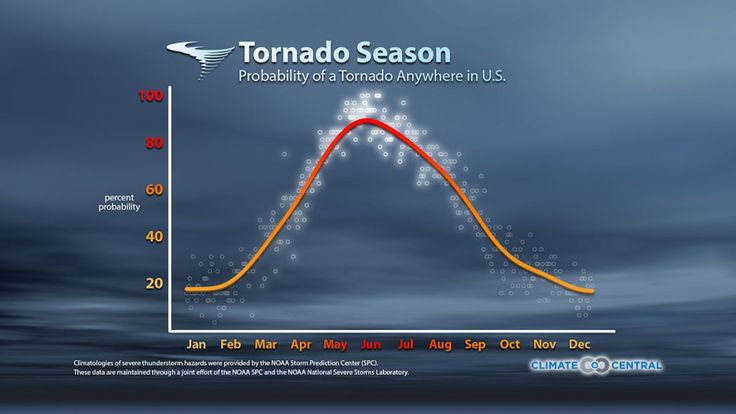Tornadoes are a powerful force of nature that can cause devastation and destruction in their path. These violent storms can form throughout the year, but there are certain times when they are more likely to occur. If you’re living in an area prone to tornadoes, you may be wondering, “When does tornado season end?” In this article, we’ll explore the different factors that influence tornado season and when you can expect it to come to a close.
Tornado season typically varies depending on the region you’re in. In the United States, tornadoes are most common in an area known as Tornado Alley, which includes parts of Texas, Oklahoma, Kansas, Iowa, Nebraska, and South Dakota. The peak of tornado activity in Tornado Alley typically occurs during the spring and early summer months, but tornadoes can occur at any time of the year.
Factors Influencing Tornado Season
There are several factors that contribute to the formation of tornadoes and influence the timing of tornado season.
Weather Patterns
Tornadoes typically form when warm, moist air collides with cool, dry air. This often happens during the spring months when the contrast between warm and cool air masses is more pronounced. The clash of these air masses creates instability in the atmosphere, leading to the development of severe thunderstorms and tornadoes.
Jet Stream
The jet stream, a high-altitude, fast-moving river of air, also plays a role in tornado formation. During tornado season, the jet stream tends to be stronger and more active, providing the necessary wind shear for tornadoes to develop. As the jet stream shifts or weakens in the summer months, tornado activity typically decreases.
La Niña and El Niño
La Niña and El Niño are climate patterns that occur in the Pacific Ocean and can influence tornado activity. La Niña, characterized by cooler than average sea surface temperatures, tends to enhance tornado activity in the southern United States, while El Niño, characterized by warmer than average sea surface temperatures, can suppress tornado activity.
Daytime Heating
Tornadoes are most likely to occur in the late afternoon and early evening when surface temperatures reach their highest point. As the sun heats the ground, it creates strong updrafts that can lead to the formation of severe thunderstorms and tornadoes.
When Does Tornado Season End?
While tornado season is generally more active in the spring and early summer, it’s important to remember that tornadoes can occur at any time of the year. In Tornado Alley, where tornado activity is highest, the peak season typically extends from April to June. However, tornadoes can still occur in the summer and fall months, albeit less frequently.
As the summer progresses, the atmosphere tends to stabilize, reducing the chances of severe weather and tornado formation. The jet stream weakens, and the contrast between warm and cool air masses becomes less pronounced. These factors contribute to a decrease in tornado activity in the late summer and fall months.
By the time winter rolls around, tornado activity is significantly diminished. Cold air masses dominate, making it less likely for warm, moist air to collide with cool, dry air and produce the necessary conditions for tornado formation. However, it’s important to note that tornadoes can still occur in isolated cases, even during the winter months.
Frequently Asked Questions
Q: Can tornadoes occur outside of tornado season?
A: While tornadoes are most common during tornado season, they can occur at any time of the year. It’s important to stay alert and have a plan in place regardless of the time of year.
Q: Are tornadoes more likely to occur at a certain time of day?
A: Tornadoes are most likely to occur in the late afternoon and early evening when surface temperatures are at their highest. However, tornadoes can still occur at any time of the day or night.
Q: How can I stay safe during tornado season?
A: It’s important to have a plan in place and be prepared for severe weather. Create a designated safe space in your home, such as a basement or an interior room on the lowest level, and have an emergency kit with essential supplies. Stay informed by monitoring weather forecasts and listening to local authorities.
Q: What should I do if a tornado is approaching?
A: Seek shelter immediately in a designated safe space. If you’re outdoors, find a sturdy building or lie flat in a low-lying area. Avoid windows and protect your head with your arms. If you’re driving, abandon your vehicle and find a low-lying area or ditch to take cover in.
Final Thoughts
Tornadoes are a natural phenomenon that can occur throughout the year, although tornado season is typically more active in the spring and early summer. Understanding the factors that influence tornado formation and knowing when tornado season typically ends in your region can help you stay prepared and stay safe. Remember to always take severe weather warnings seriously and have a plan in place to protect yourself and your loved ones. Stay vigilant, stay informed, and stay safe.
